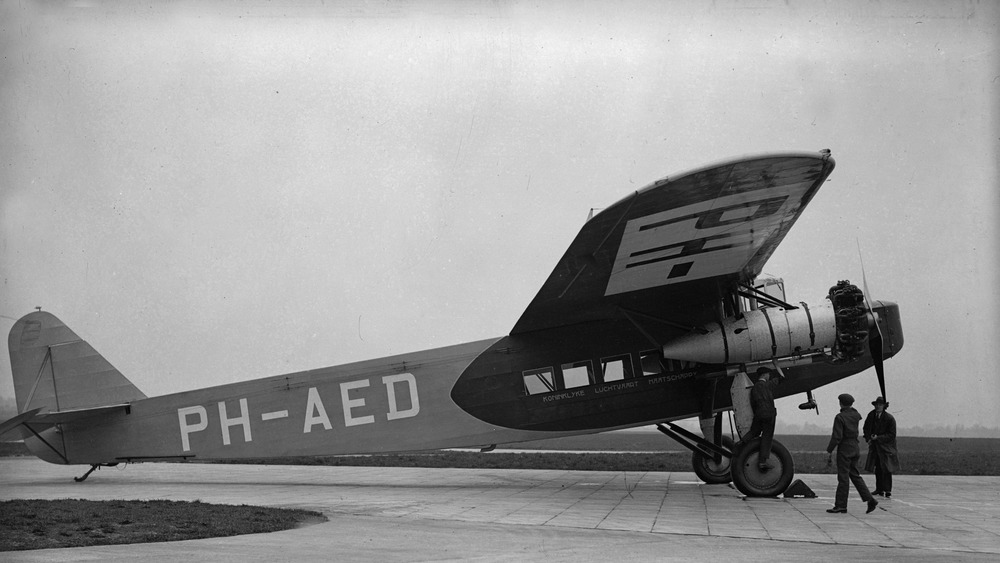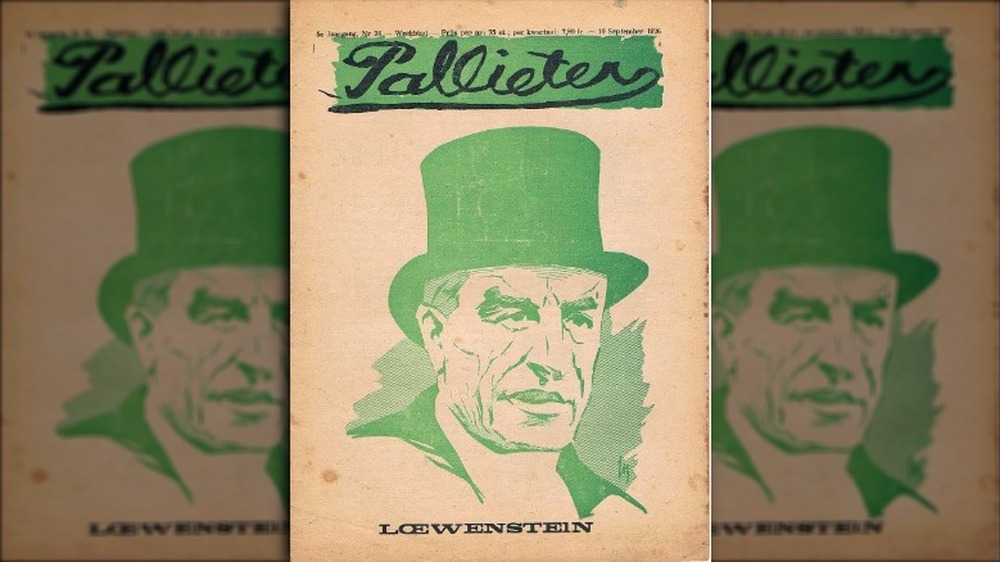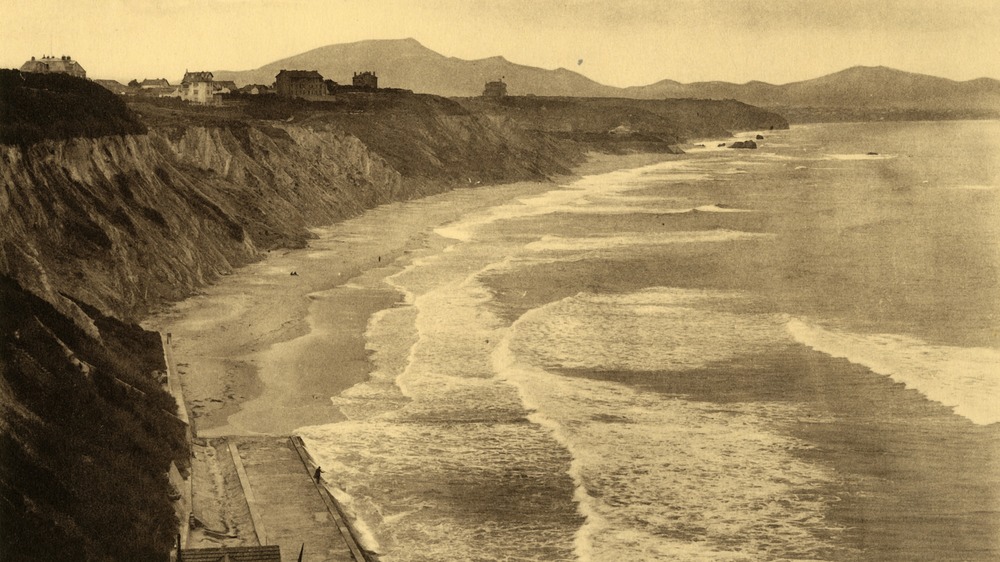The Mysterious Disappearance Of Alfred Loewenstein
It had been called the mystery of "the man who fell from the sky," and to this day no one knows for certain what happened July 4, 1928, in what The New York Times described as one of the "strangest fatalities in the history of commercial aviation." Almost a century later, the disappearance of Captain Alfred Loewenstein from his Fokker Tri-motor private airplane, crossing the English Channel from South London's Croydon Airport to Brussels, Belgium, is still an eyebrow-raiser. Indeed, while the immediate facts surrounding the event at the time were deeply odd, intrigue has only grown in the intervening years, as more theories as to the circumstances surrounding Loewenstein's demise have been brought to light.
Loewenstein was born March 11, 1877, in Brussels, according to The Mutineer. His father was a banker, and Alfred followed in his father's footsteps, building up a hefty and well-planned investment portfolio, in part the result of buying into electric power and synthetic silk just as these developments were starting to take off. There were rumors, however, that Loewenstein was into some dirty dealings, including, perhaps, some ventures involving illegal narcotics. It is believed that at the time of his death at age 51 that Loewenstein was possibly the third-richest man in the whole world — a title currently held by Elon Musk, reports The Brussels Times – and news of his disappearance sent markets tumbling.
The disappearance of Alfred Loewenstein: the facts
The generally accepted facts of the demise of Alfred Loewenstein run something like this: Around 6:30 p.m. on the day of the incident, Loewenstein's plane was cruising at 4,000 feet above the English Channel, according to the Aviation Safety Network. The financier, one of seven occupants aboard the luxury aircraft, excused himself from his seat to use the lavatory at the rear of the plane. Loewenstein, however, did not return to his seat.
After a long period of absence, his valet, Fred Baxter, decided to go and look for his employer and to check everything was all right. After receiving no response from inside the lavatory, according to The Mutineer, Baxter forced the door. The lavatory compartment was empty. Instead, the assistant reportedly found the rear entry door of the craft open, being buffeted in the airflow running over the high-flying plane.
All of Loewenstein's fellow passengers agreed that the financier must have walked out of the entrance door of the plane. The strangeness of what had happened meant the international press went into overdrive, conflating facts and rumors to try to get to the bottom of why exactly a wealthy and intelligent man had seemingly perished in such terrible circumstances. The Evening Independent in England and the Healdsberg Tribune in the US both suggested Loewenstein had committed suicide — but that was just one theory.
Many theories about the Loewenstein mystery
Alfred Loewenstein's body was finally recovered on July 19, 1928, according to The Mutineer, when fishermen off the coast of Boulogne, France, discovered it in the sea and took it to Calais. A brief autopsy took place, where, as the headlines reported (posted at The Trove), it was agreed that Loewenstein had been alive when he hit the water.
Those who argue that Loewenstein jumped from the plane on purpose use this autopsy as evidence for their claims, backing the theory up with the fact that, per The Mutineer, his business dealings were about to be investigated, and his corrupt practices soon to be exposed, potentially disgracing him. But since the death, many researchers have come to the conclusion that the financier may have been murdered, either by his employees or perhaps by his own family. Researcher William Norris came to the conclusion that the pilot of the plane killed Loewenstein on behalf of Loewenstein's wife, Madeleine, as a way of gaining control of his finances. Many have pointed to Madeleine not attending the businessman's funeral as evidence of complicity. Reportedly, Madeleine had Loewenstein buried in an unmarked grave, scuppering the chances of a later inquiry.
Some outlets, such as The New York Times, however, argued that the death was an unfortunate accident, and that Loewenstein, who had grown increasingly absent-minded, simply opened the wrong door.
If you or anyone you know is having suicidal thoughts, please call the National Suicide Prevention Lifeline at 1-800-273-TALK (8255).


